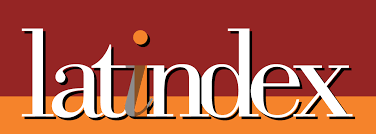Imagenological resources for the diagnosis and monitoring of alterations in the patient with dysfunction of the mandibular cranio-cervical system
DOI:
https://doi.org/10.60094/RID.20240301-32Keywords:
Computed tomography, craniomandibular disorders, cervical vertebraeAbstract
The skull, mandible and cervical spine present neurological and biomechanical connections, generating a functional complex called craniocervicomandibular system (SCCM). The study of the dysfunctions of this system focuses on the pathophysiology of these related structures. Its diagnosis should be based on the clinical and functional examination and the corresponding imaging analyses. A clinical case of a 20-year-old male patient is reported, who attended the Postgraduate Dentofacial Orthopedics and Orthodontics area of the University of Carabobo, referring to mild joint pain, for which a clinical evaluation, lateral cephalic x-ray, and open mouth anteroposterior (AP) x-ray and cone beam computed tomography (CBCT) were performed. The clinical findings, the indicated therapy, as well as the changes observed in the control are described. Clinically, he presented postural asymmetry, straight profile, skeletal class II. In the closed mouth CBCT of the temporomandibular joint, both condyles of the mandible are observed in a posterior position, with increased anterior joint space, in the open mouth AP radiograph, asymmetry of the joint spaces and in the Rocabado analysis in the lateral cephalic radiograph, anterior rotation of the skull, reduced subocipital space between atlas and axis, low hyoid. The treatment plan consisted of orthopedic physiotherapy and the use of the anterior orthostatic guide type splint (MAGO), a marked improvement in symptoms and craniocervical posture was observed. An interdisciplinary approach is essential, considering the craniocervical relationship in the field of orthodontics, to achieve accurate diagnoses and stable treatments over time.
Downloads
References
Minervini G, Franco R, Marrapodi MM, Crimi S, Badnjević A, Cervino G, et al. Correlation between temporomandibular Disorders (TMD) and posture evaluated trough the diagnostic criteria for Temporomandibular Disorders (DC/TMD): a systematic review with meta-analysis. J Clin Med. 2023 Apr 2; 12(7):2652. DOI: https://doi.org/10.3390/jcm12072652.
Jiménez Y, Machado M, Véliz, Barreto E, Jiménez L. Enfoque integral en el diagnóstico del patrón esquelético maxilomandibular, la postura corporal y cráneo- cervical. Rev Cubana Estomatol [Internet]. 2022 Mar [citado 2 de agosto 2023] ; 59(1): e3545. Disponible en: http://scielo.sld.cu/scielo.php?script=sci_arttext&pid=S003475072022000100007&lng=es.
Rocabado M, Tapia V. Radiographic study of the craniocervical relation in patients under orthodontic treatment and the incidence of related symptoms. Cranio. 1987; 5(1): 36-42. DOI: https://doi.org/10.1080/08869634.1987.11678172
Cárdenas J, Flores J, Gutiérrez F, Cárdenas G, Sánchez W, Guerrero A. Estudiomorfométrico de la posición cráneo-cervical en pacientes con clases esqueletales II y III. Int. j. morphol. 2015;33(2):415-9. DOI: https://dx.doi.org/10.4067/S0717-95022015000200001
Weber P, Correa EC, Ferreira F dos S, Soares JC, Bolzan G de P, Silva AM. Cervical spine dysfunction signs and symptoms in individuals with temporomandibular disorder. J Soc Bras Fonoaudiol. 2012; 24(2):134-9. DOI: https://doi.org/10.1590/s2179-64912012000200008
Garrigós M, Elizagaray I, Domínguez A, Del Castillo JL, Gil A. Temporomandibular disorders: improving outcomes using a multidisciplinary approach. Journal of Multidisciplinary Healthcare. 2019;12:733-47. DOI: https://doi.org/10.2147/JMDH.S178507.
Carvajal J, Gómez E, Guzmán J, Lolli P. Relación del plano oclusal inclinado con la rotación del atlas sobre el axis en niños entre 4 y 12 años de la ciudad de Viña del Mar. [Trabajo de grado para la obtención de título de especialista en Ortodoncia]. [Chile]. Universidad Andrés Bello; 2016
Rocabado, M. Análisis biomecánico cráneo cervical a través de una telerradiografíalateral. Rev Chil Ortod. 1984;16:1-11.
Rocabado M. Formaterapia Tv / Prof. Dr. Mariano Rocabado/ Cefaleas, dolor orofacial y DTM. [video en internet]. Youtube. 5 de abril de 2021[citado 5 de julio de 2023]. Recuperado a partir de: https://youtu.be/UrIeZVPKww8.
Rocabado M. Cabeza y cuello, tratamiento articular. Buenos Aires: Inter-Médica; 1979. p. 14.
Ramos MM, Sylvester Riedel AM, San Pedro-Valenzuela J. Análisis de la imagen radiográfica A.P a boca abierta de la articulación cráneo cervical alta ( Occipital C1 y C2). Anuario Sociedad Radiológica Dental de Chile 1987;88:31-40.
Aranitasi L, Tarazona B, Zamora N, Gandía JL, Paredes V. Influence of skeletal class in the morphology of cervical vertebrae: A study using cone beam computed tomography. Angle Orthod. 2017 Jan;87(1):131-7. DOI: https://doi.org/10.2319/041416-307.1.
Casanova, C. Diagnóstico biofuncional Roth Williams. Garantía de un tratamiento de por vida. Colombia: Amolca; 2021.
Cevallos A, Vinueza N, Paredes C, Bolivar D, Mármol B, Sagasti F. Mapeo del dolor de la articulación temporomandibular en adolescentes que hayan recibido tratamiento de ortodoncia. Rev Cubana de Investigaciones Biomédicas. [Internet]. 2018 Dic [citado 25 enero 2023]; 37(4):17.
Hatcher D. Progressive Condylar Resorption: Pathologic. Processes and Imaging Considerations. Seminars in Orthodontics. 2013;19(2):97-105. DOI: https://doi.org/10.1053/j.sodo.2012.11.005
Rocabado M, Johnston BE Jr, Blakney MG. Physical therapy and dentistry: an overview. J Craniomandibular Pract. 1982 Dec-1983 Feb; 1(1):46-9. DOI: https://doi.org/10.1080/07345410.1982.11677818.
Published
How to Cite
Issue
Section
License
Copyright (c) 2024 Heidy Angelina Aguilar Lugo, Ambar Zalnieriunas-Montero, Bersi Terán-de Orozco, Glenda Josefina Falótico-de Farías, Belkis Dommar-Pérez

This work is licensed under a Creative Commons Attribution 4.0 International License.
This work is licensed under a Creative Commons Attribution 4.0 International License.
AUTHORS RETAIN THEIR RIGHTS:
You are free to:
- Share: copy and redistribute the material in any medium or format for any purpose, including commercially.
Adapt: remix, transform and build upon the material for any purpose, including commercially.
The licensor cannot revoke these freedoms as long as you follow the terms of the license under the following terms:
- Attribution : you must give proper credit , provide a link to the license, and indicate if changes have been made. You may do so in any reasonable manner, but not in such a way as to suggest that you or your use is supported by the licensor.
- No additional restrictions: you may not apply legal terms or technological measures that legally restrict others from making any use permitted by the license.











